Azorean cuisine, history, religion, agriculture and the surrounding sea are all inextricably linked – learn how on our Ponta Delgada Food Tour.
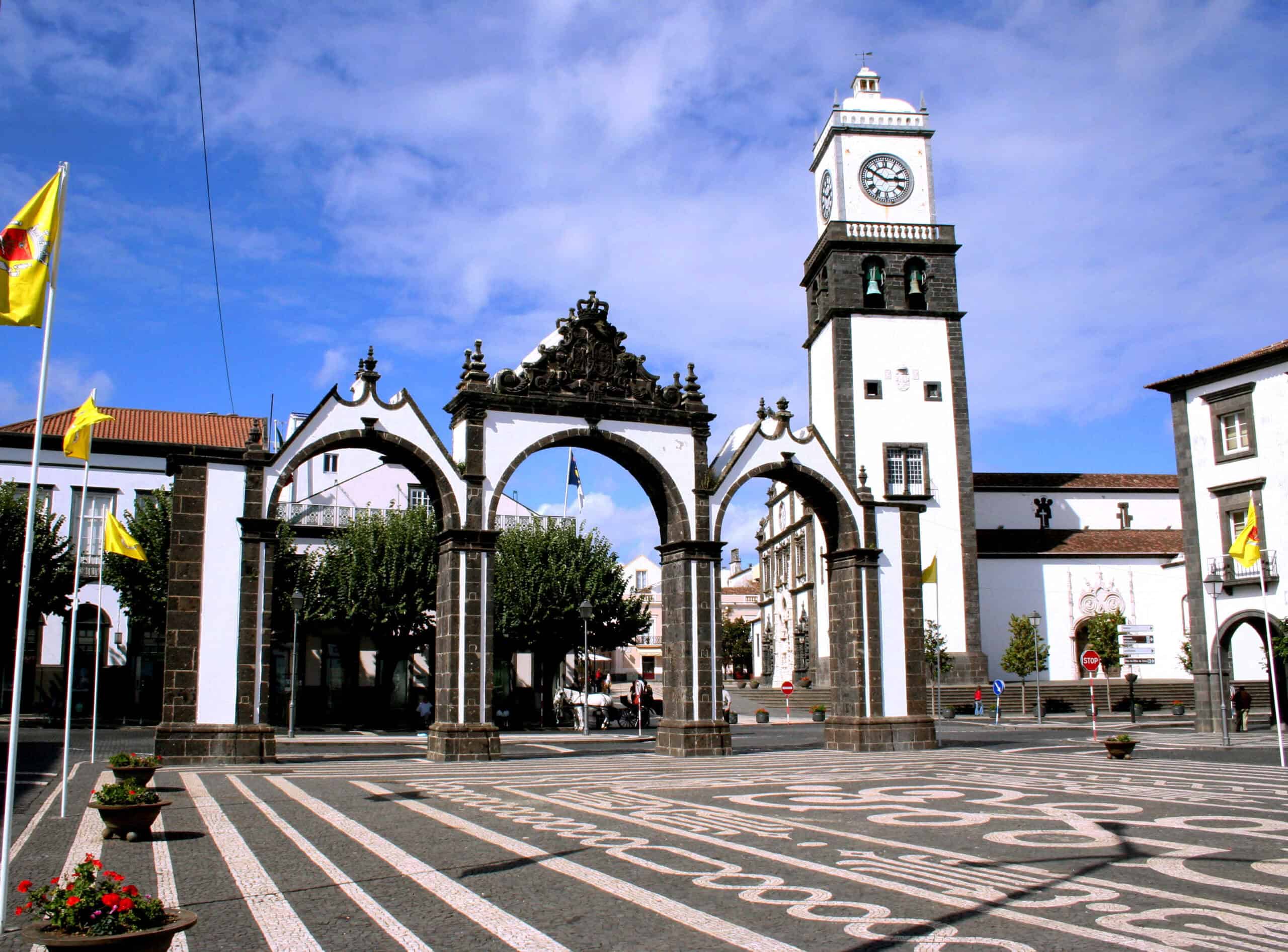
Your morning begins at one of the Azores’ most-iconic locations – the Portas da Cidade city gates. Constructed in 1783, these famous arches once stood directly on the quayside of Ponta Delgada’s old harbour, as a grandiose entrance for the great and good arriving by boat to the island. The Azores have always been key to trans-Atlantic travel, and as a vital navigation beacon and resupply point for trade ships returning to Portugal from her Indian and Brazilian colonies in the 16th and 17th Centuries, the island’s saw an influx of spices such as black pepper, cinnamon, allspice and nutmeg which Azorean’s happily incorporated into their cuisine.
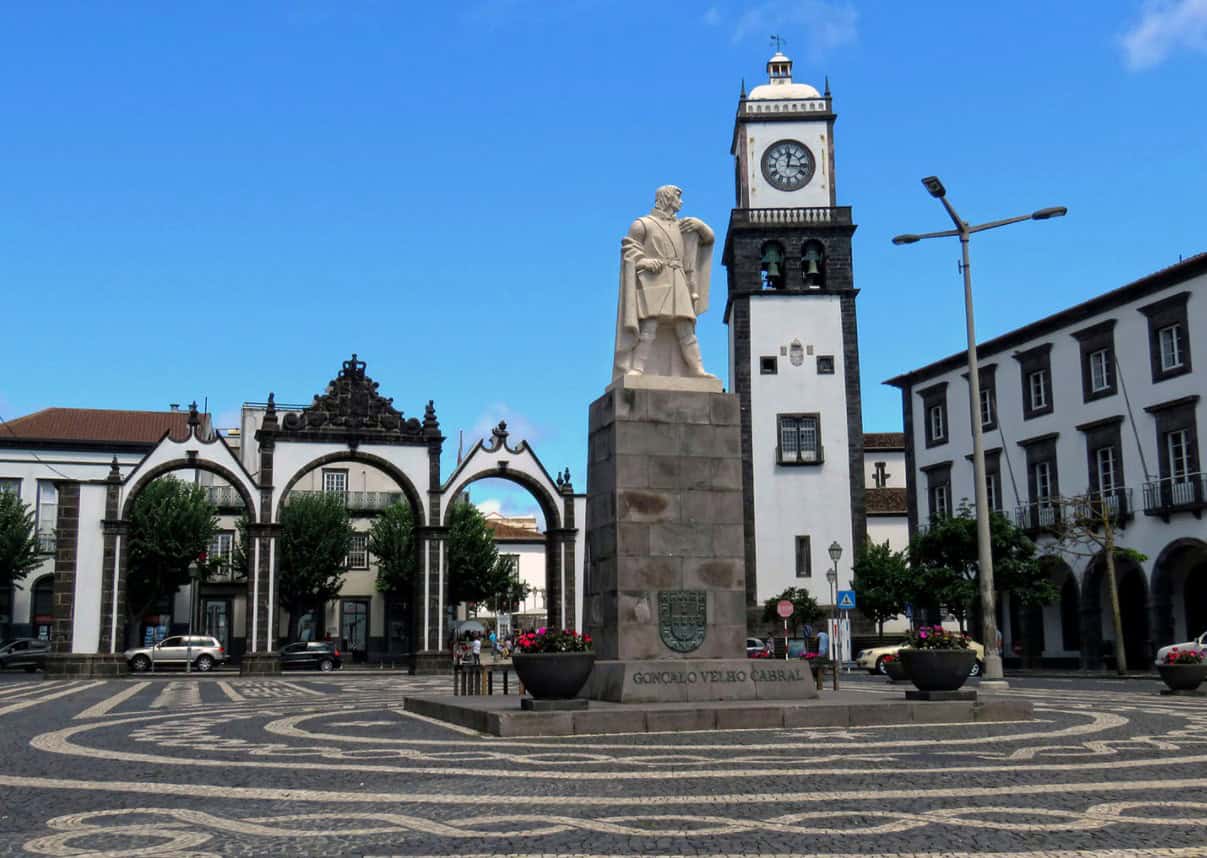
The city gates were moved to their current position in the Praca de Goncalo Velho when the Avenida Infante Dom Henrique was constructed in 1948. Goncalo Velha was the first governor of Sao Miguel (and nearby Santa Maria) after it’s settlement in 1432 – you’ll see his statue in the centre of the square.
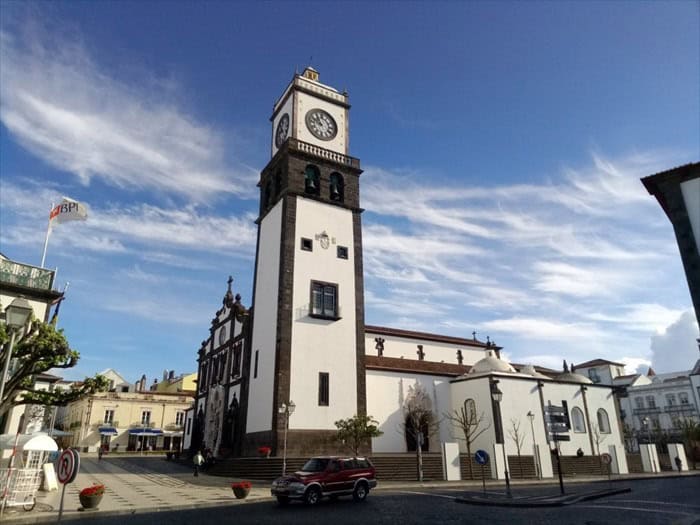
Overlooking the Praca is the bell tower of the Igreja Matriz de Sao Sebastiao – the 16th Century parish church of Ponta Delgada. Religion’s had a strong hand in steering Azorean eating habits – the islands’ calendar is filled with religious festivals, each with it’s own ‘signature dish’. The largest of these is the Festa do Senhor Santo Cristo dos Milagres – the festival of the Lord Holy Christ of Miracles.
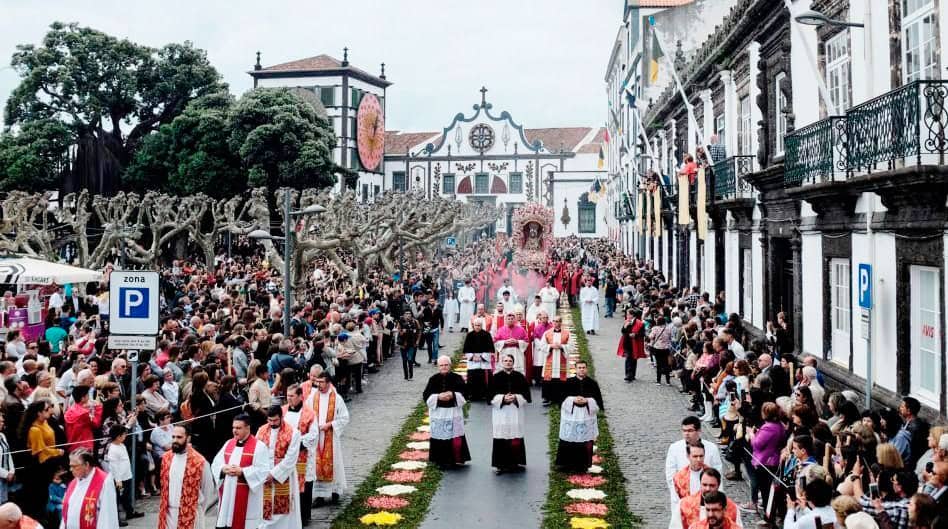
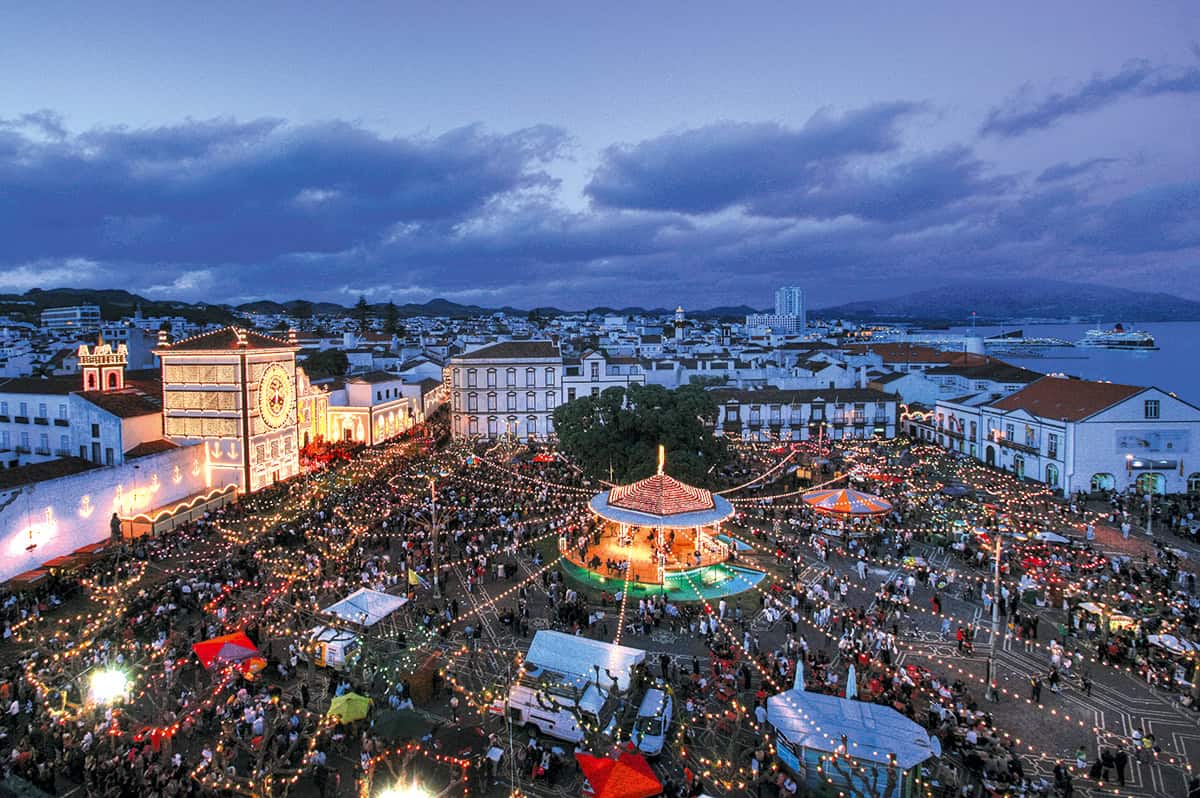
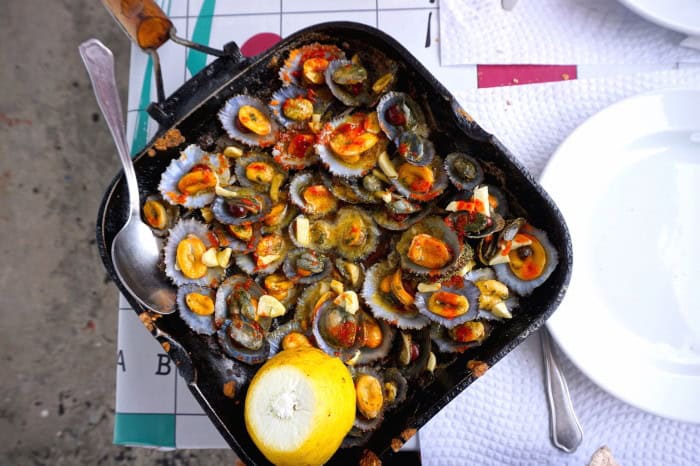
This three-day festival takes place on the fifth weekend after Easter, and the massive influx of visitors to the city is matched by an equal influx of street-food vendors from across the island, serving Portuguese favourites such as chourico a bombeiro (flame-grilled choritzo, cooked in a clay ‘assador’), grilled lapas (limpets) smothered in garlic, chilli and olive oil, bolos levedo (sweet bread muffins) and pasteis de bacalhau: balls of deep-fried salt cod, potato and parsley.
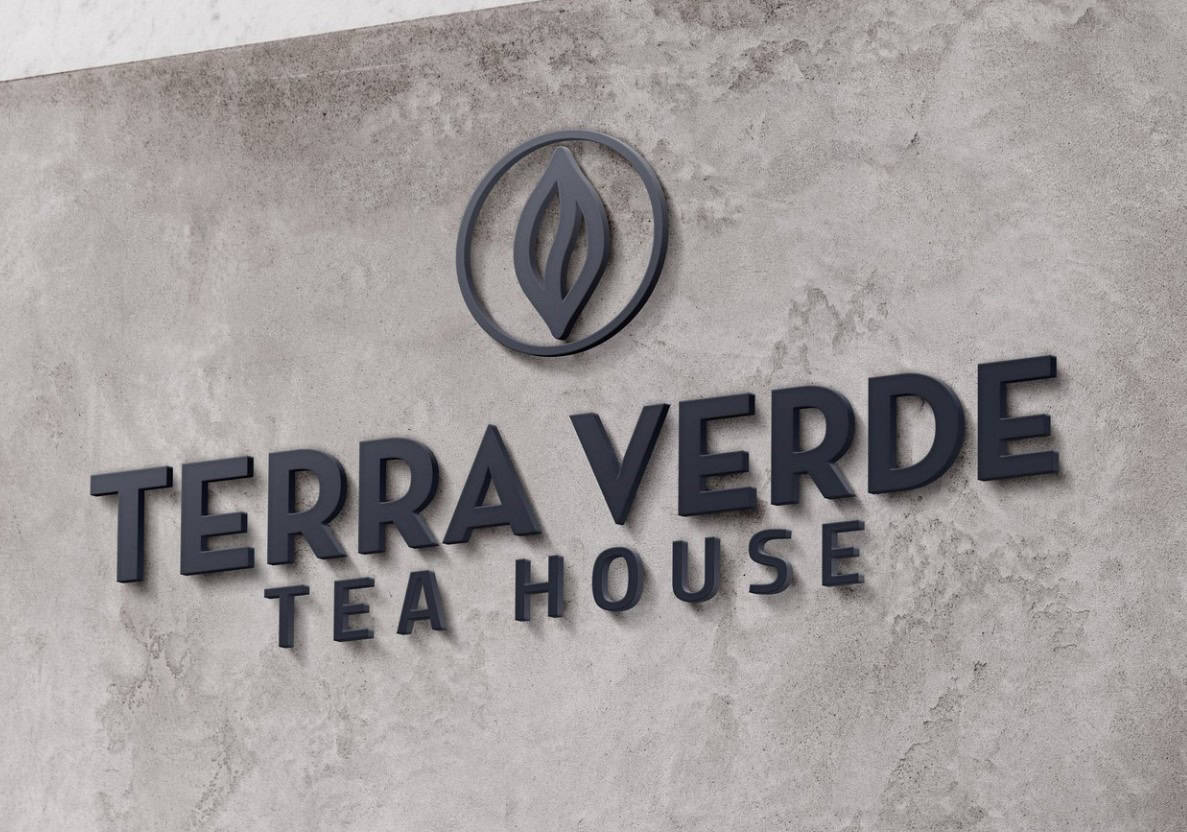
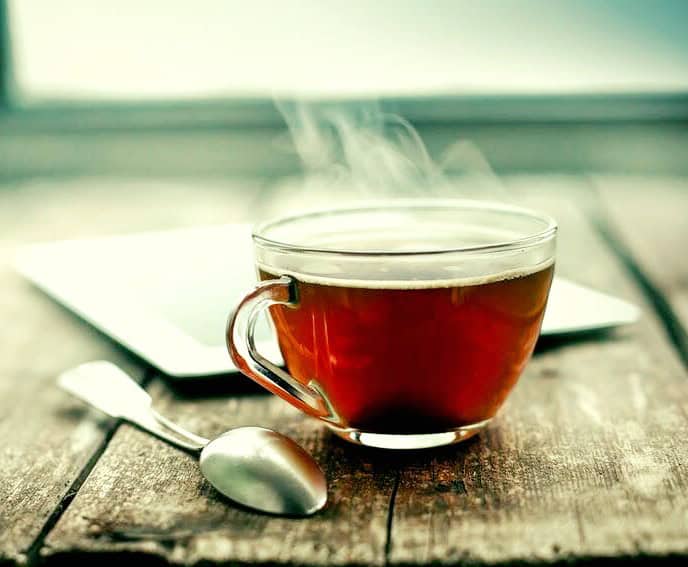
Time for elevens – a five-minute walk will bring you to the Terra Verde Tea House. Sao Miguel’s Gorreana tea plantation is Europe’s oldest producer of tea. The plantation was established in 1883, and the original 19th Century production processes are still in use today. The plantation is on the north coast of the island, spread across thirty-two acres and produces around thirty tons of tea per year.
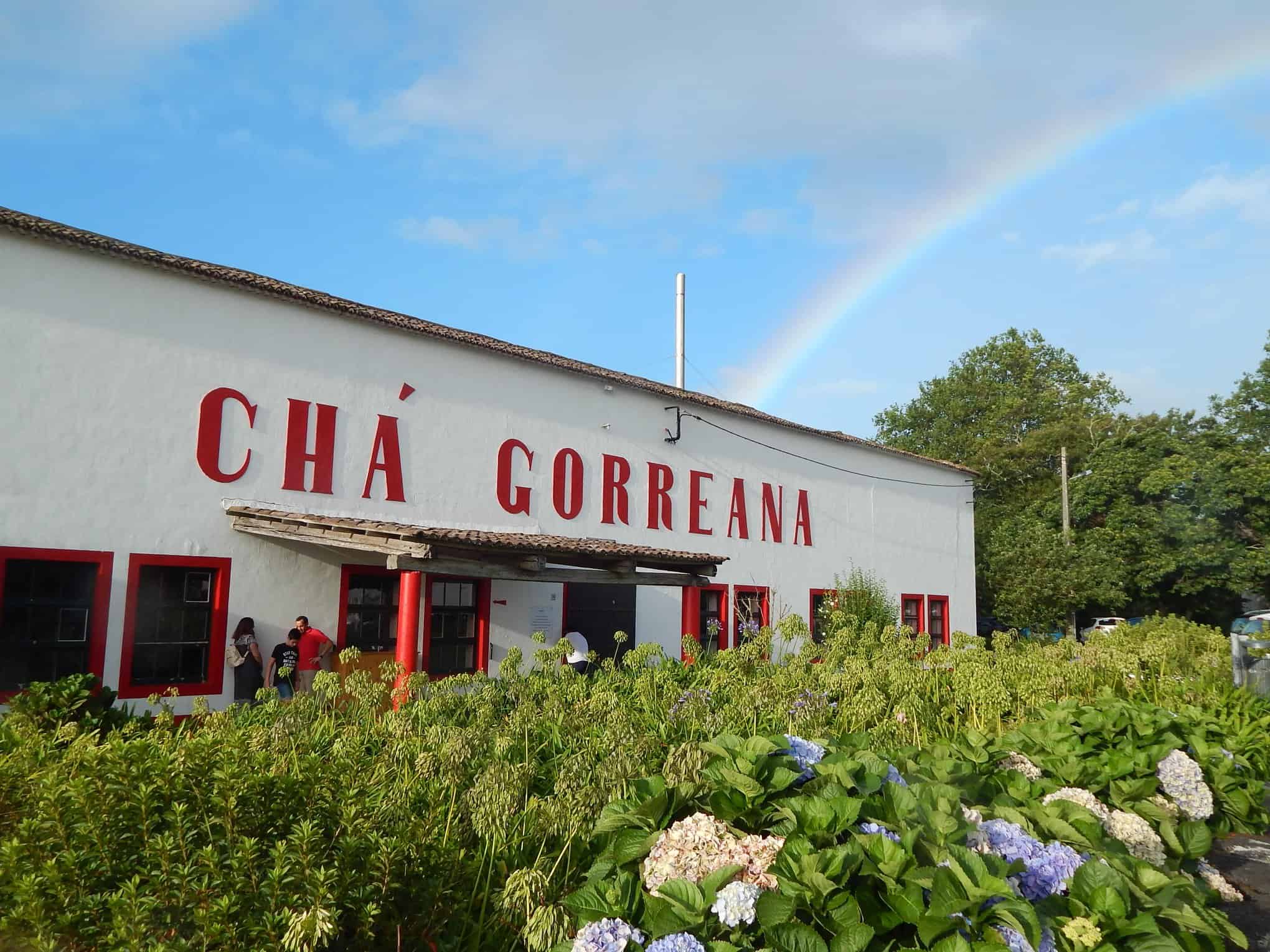
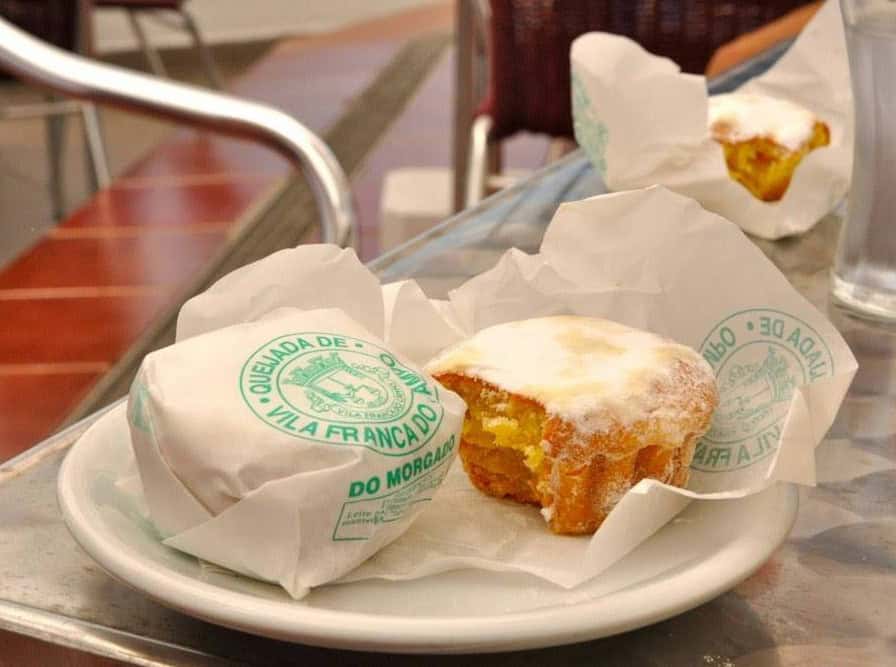
There are six varieties of black tea to choose from (including Moinha, Orange Pekoe and Oolong) and three green teas (Hysson, Encosta de Bruma and Pearl), accompanied by a selection of classic Portuguese pastries, including pasteis de nata (custard and cinnamon tarts) and queijadas. Queijadas are traditional Azorean small tarts – the recipe varies from island to island, and Sao Miguel’s variation (with ground almonds) are baked just along the south coast in Vila Franca do Campo at the Do Morgado bakery.
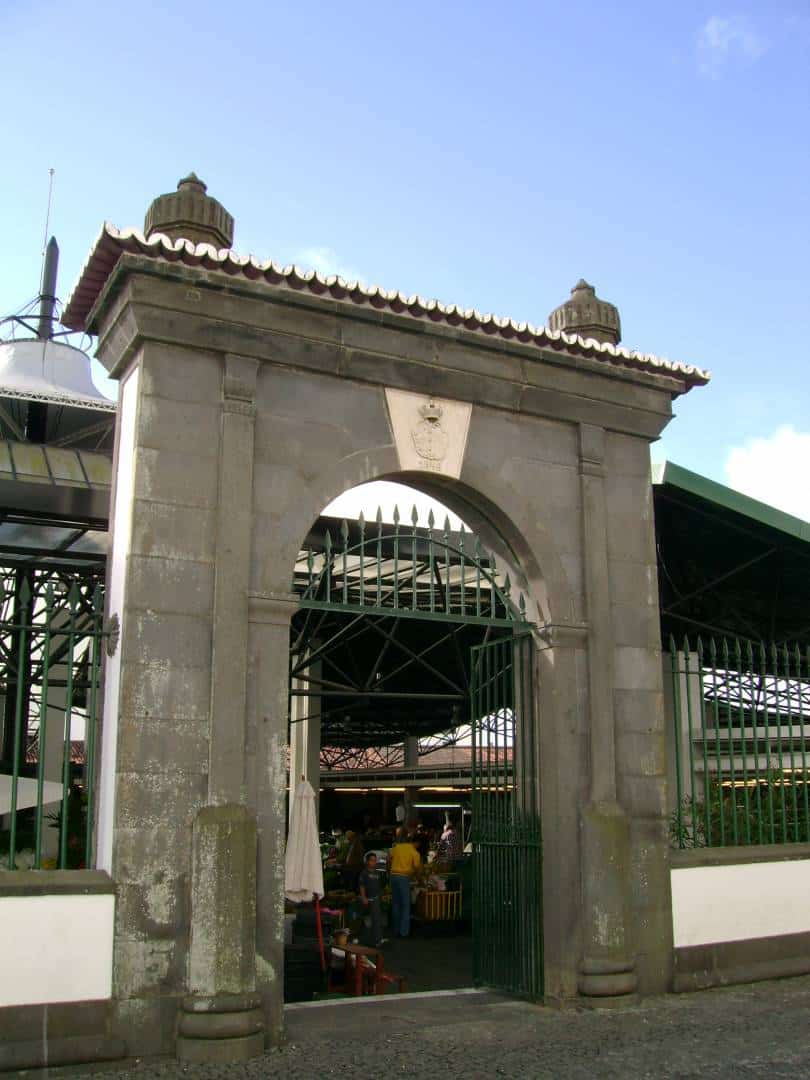
Leaving Terra Verde, it’s a short walk to the Mercado da Graça – the city’s farmers’ market. Back in the early 1800s, the Praça do Município (close to the Igreja Matriz de Sao Sebastiao) was the favoured open-air location for Sao Miguel’s farmers to sell their produce. This was also the location of Ponta Delgada’s Câmara Municipal (town hall), and the city council were keen to move the farmers, their donkeys and the accompanying mess to a new home. Plans were made for the construction of a permanent Agricultural Market which would bring together the town hall farmers, the fishermen from the seafront and the livestock traders all under one roof – and so the ‘Grace Market’ was inaugurated in 1852.
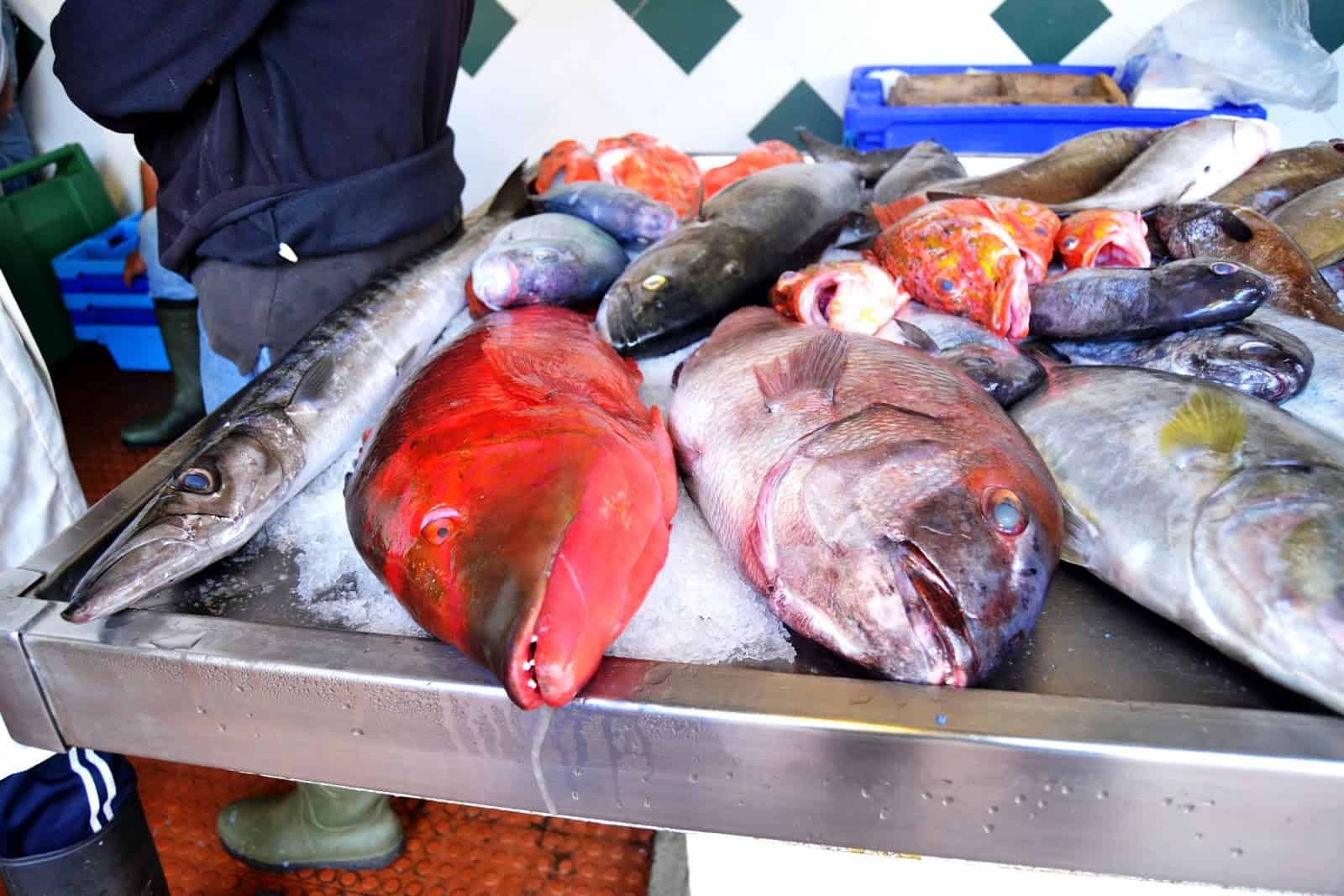
The Azores are famed across Portugal for their fresh fish and beef (it’s often said: there are more cows in the Azores than people), but perhaps less well-known for their seasonal fruits and vegetables. The islands’ fertile volcanic soil and mid-Atlantic climate allow farmers to grow produce, and in particular fruits, which are unavailable on the mainland. Ananas (pineapples) are coveted by Azoreans, as is the Araçal – a small fruit similar to a guava but with a stronger, more acidic flavour. You’ll also have an opportunity to sample one of our favourite Azorean fruits: the Annonas – similar to a pawpaw or custard apple, with a sweet, creamy vanilla-like taste.
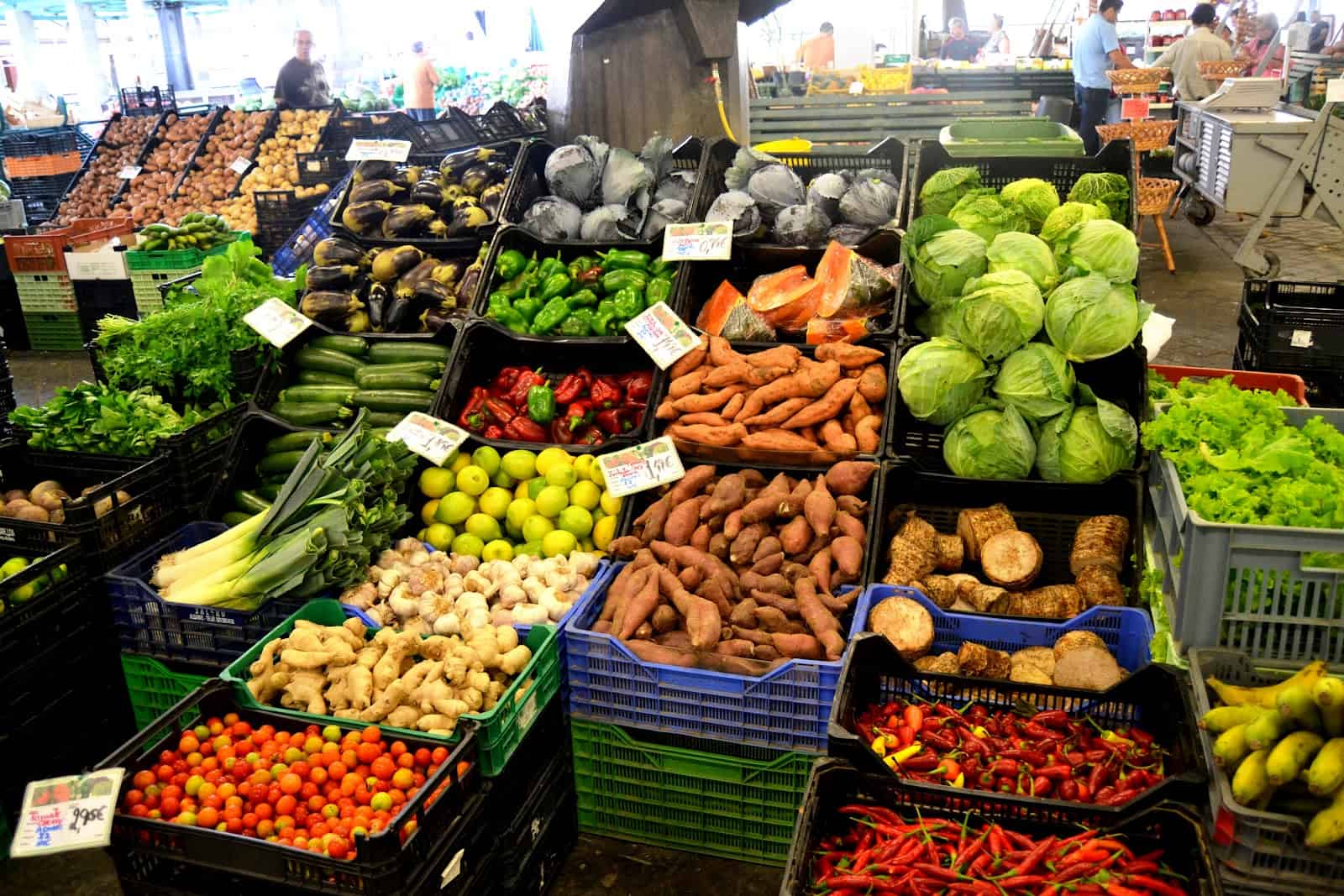
In 19th Century, Sao Miguel was one of the largest exporters of oranges to the UK, and many of Ponta Delgada’s grand townhouses were built as homes for traders involved in the lucrative orange export industry. Sadly, a pan-European disease (known as the Great French Wine Blight) decimated the entire orange crop and most of the Azorean vineyards in the late 1800s. Over time, the vineyards recovered but the orange groves were never replanted, and so a close link between our two countries was lost. Sweet potatoes appear in almost every Azorean meal in one form or another, as does home-grown garlic, red peppers and pimenton. Unlike paprika, pimenton is always made from smoke-dried peppers, (rather than air-dried and sweet, or smoked varieties). In Azorean cuisine, it’s often used in conjunction with Portuguese chouriço.
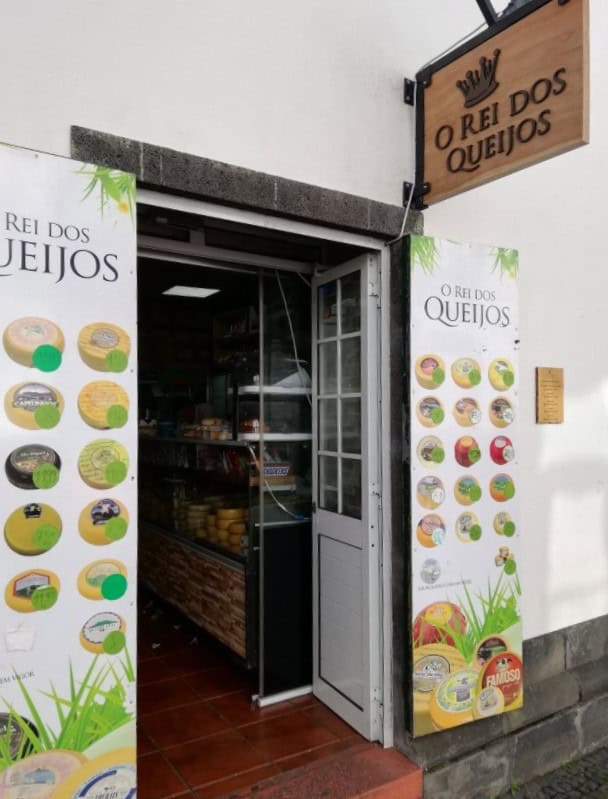
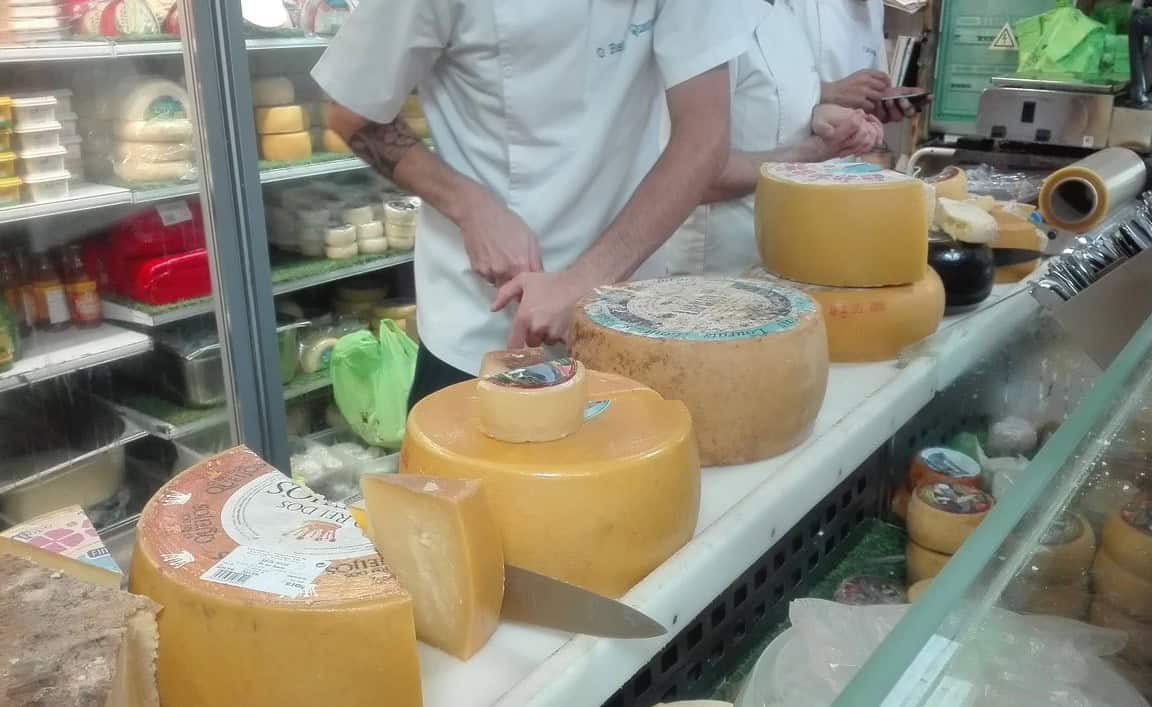
The Mercado da Graça is also home to a small stand-alone shop called O Rei dos Queijos – the ‘King of Cheese. They specialise in Azorean cheeses, local charcuterie (Portuguese Chorizo is particularly good), fresh bread and biscuits, and wines and sweet liquors from around the islands. The Azores are responsible for 50% of the cheese produced in Portugal, and like queijadas, Azorean cheeses vary from island to island:
–Queijo Sao Jorge, from the island of the same name, is arguably the most famous. It’s a dark yellow cow’s cheese with a nutty, quite buttery flavour.
–Queijo Vaquinha is a semi-soft cheese from the island of Terceira, sometimes flavoured with ground black pepper.
–Queijo do Pico, from the island of Pico is sold quite young (only being aged for around a month) and has a soft exture and salty flavour.
–Omorro Amanteigado –produced on the island of Faial, Omorro is quite a sticky, gooey cheese which can be sliced or spread.
–Queijo do Vale – the new kid on the block. Created in 2016 by Paula Rego when she was just 17 years old – Paula touch the classic cheeses made by her father and added the mineral-rich spring waters of her native Furnas to create something unique.
–Queijo Ilheu Sao Miguel – this designation-of-origin protected cheese is aged for a minimum of nine months, and has a salty, piquant flavour similar to parmesan. Known locally as the Black Rind Cheese, it’s distinctive wax coating makes it’s easy to find on the shop shelves.
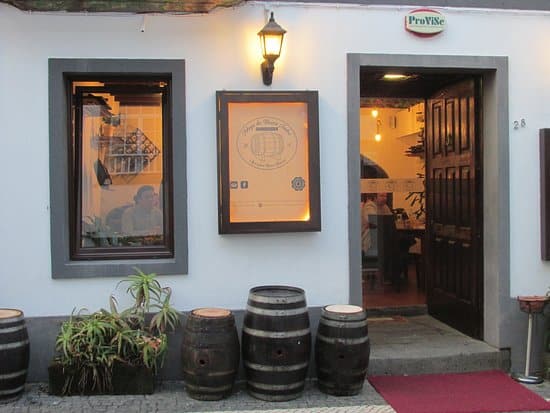
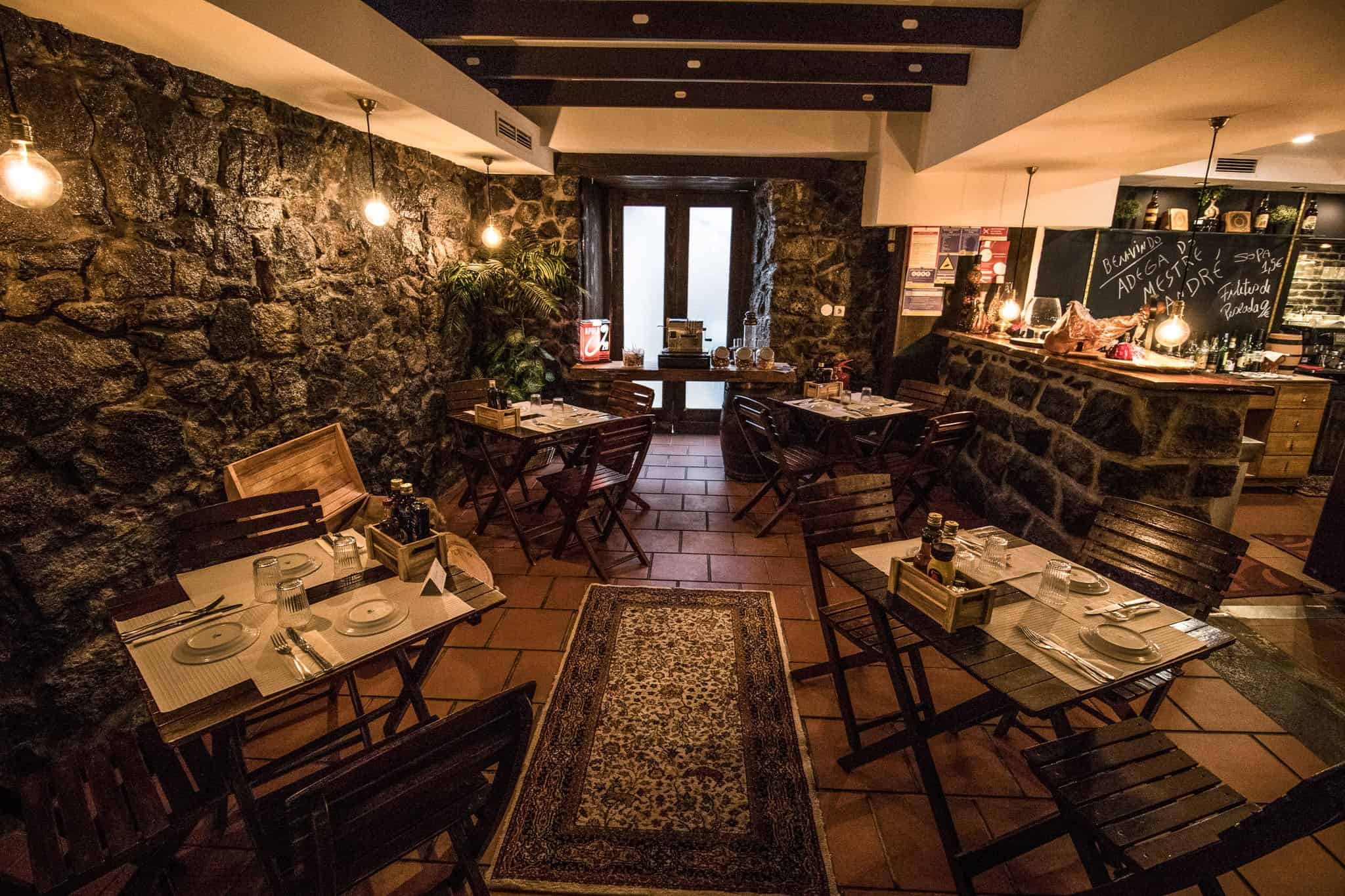
Lunchtime brings you to your final destination – the archetypal Ponta Delgada restaurant. You’ll usually visit either the Taberna Açor, a Tasca or the Adega do Mestre Andre – all three are excellent and you’ll have the opportunity to sample a typical Azorean lunch. The seasonal menu will vary according to the time of year, but almost every Azorean meals begins with a Portuguese staple: queijo fresco – fresh cheese, drizzled with olive oil, spicy pimento moida (a red pepper sauce) and black pepper, served with fresh crust bread. Queijo fresco is similar to ricotta, although it’s made from curd rather than whey.
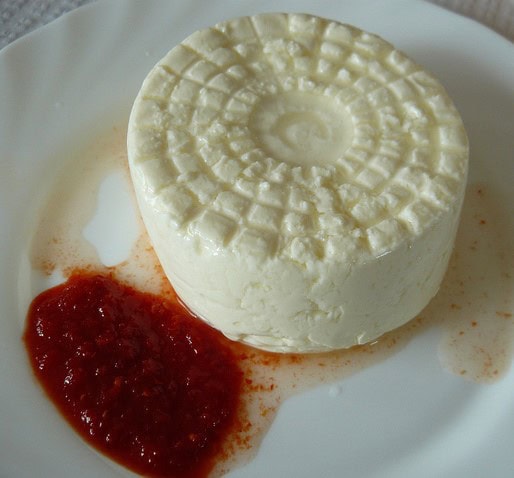
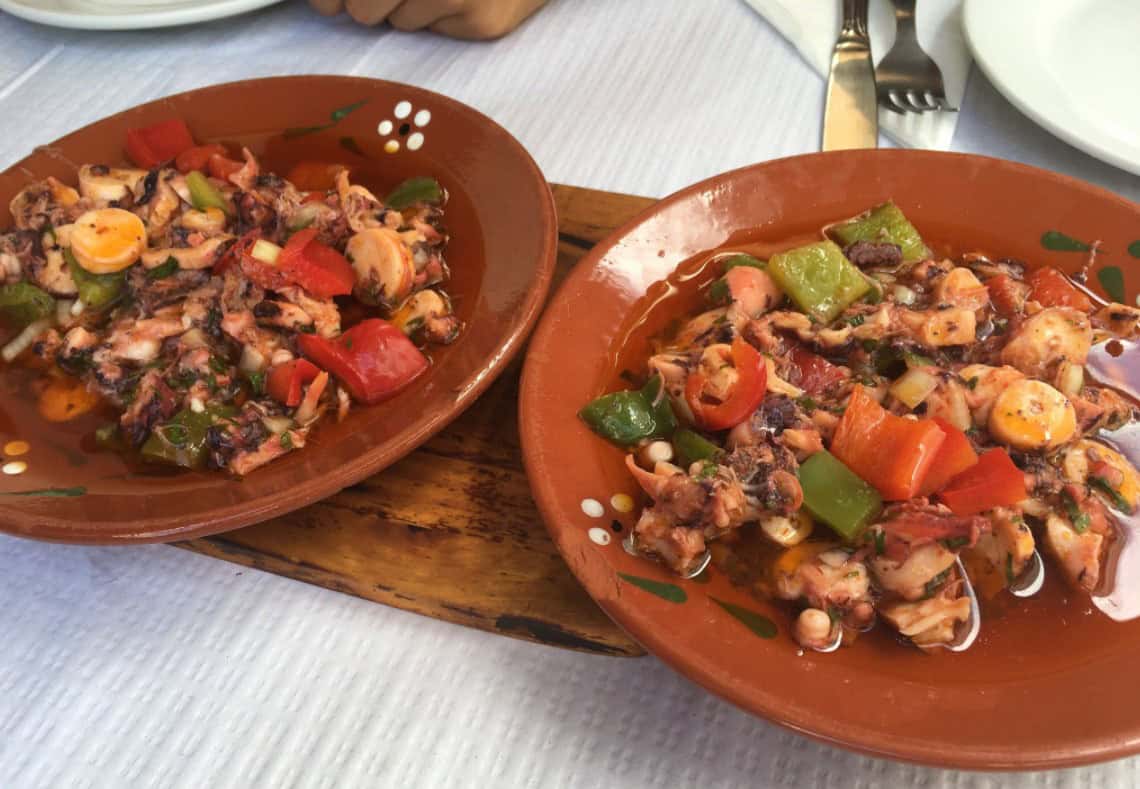
Next, a Salada de Polvo – octopus salad of onions, local tomatoes and roasted peppers, olive oil, a squeeze of lime and white wine vinegar. Octopus has a similar flavour to lobster and is present on almost all Azorean menus – polvo guisado (stewed), polvo assado (roasted) and polvo grelhado (grilled).
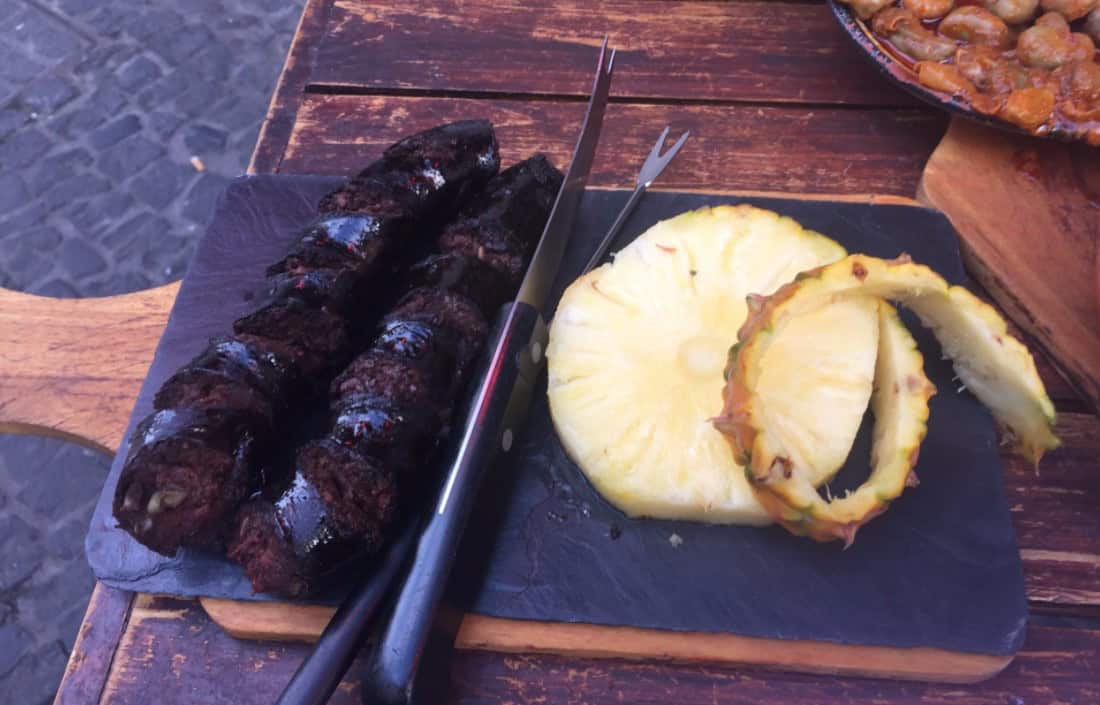
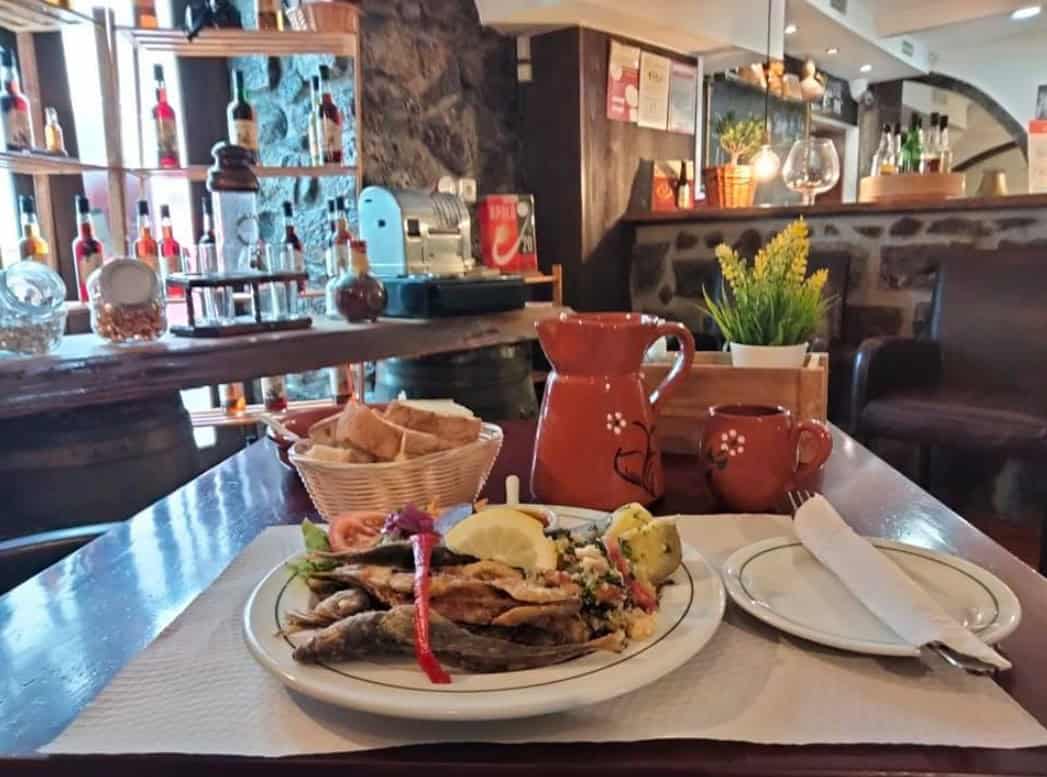
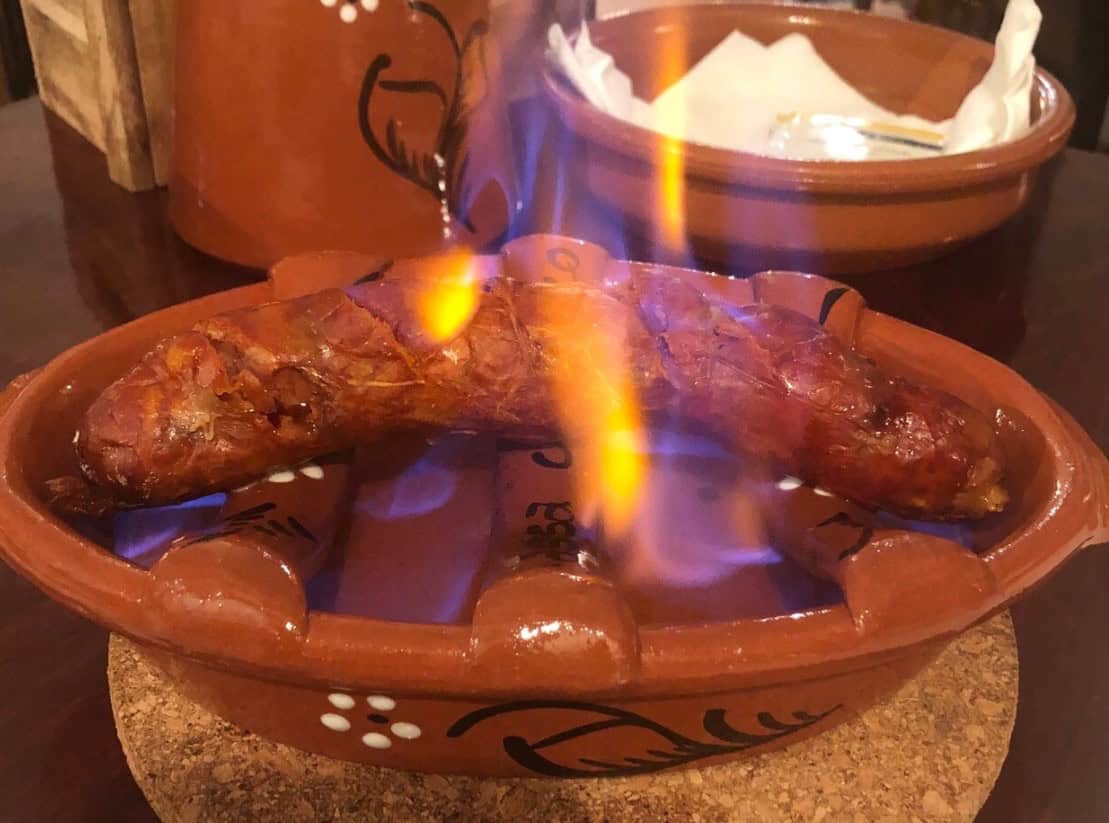
Next to the table, you’ll share a morcela (similar to black pudding, but with added nutmeg and cinnamon), carapaus fritos (fried mackerel, typically served with rice) and the aforementioned chourico a bombeiro. The fun is in the theatre of the dish – the chorizo is placed on top of an Assador de Barro, which looks almost like a clay BBQ. Aguardente is poured into the base of the assador – aguardente is a clear spirit distilled from Portuguese wine, typically used to fortify Port. It’s highly-flammable and whole thing is ignited at your table – a fork-fight ensues, as diners scramble for a slice of the deliciously-crisp chorizo.
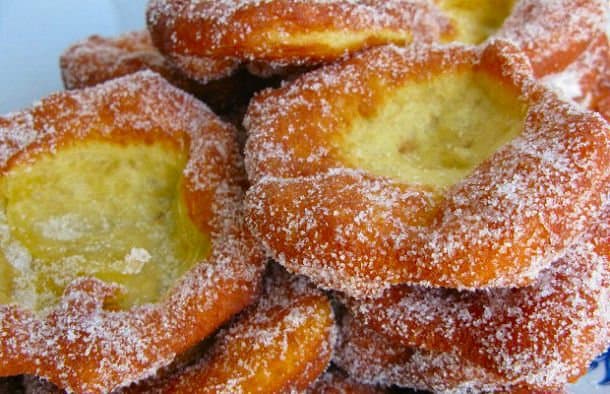
Your food tour usually ends with coffee and sweet malassadas – an Azorean classic.
Our Where to eat guides are based on our first-hand experiences and our love of great Portuguese cuisine:
Where to eat in Ponta Delgada
Our Ponta Delgada Food Tour
Where to eat on Sao Miguel – Sete Cidades and the west
Where to eat on Sao Miguel – the north coast
Where to eat on Sao Miguel – Furnas and the east
Where to eat on Sao Miguel – the south coast
Where to eat in Angra
Where to eat on Terceira
Where to eat on Faial
Where to eat on Sao Jorge
Where to eat on Pico
Where to eat on Flores, Corvo, Santa Maria and Graciosa
Where to eat in Lisbon
Where to eat in Funchal
Our Funchal Food Tour
Where to eat on Madeira
We specialise in personalised holidays to the nine islands of the Azores.
Call our team on 01768 721020 to begin planning your own adventure.










Follow us online